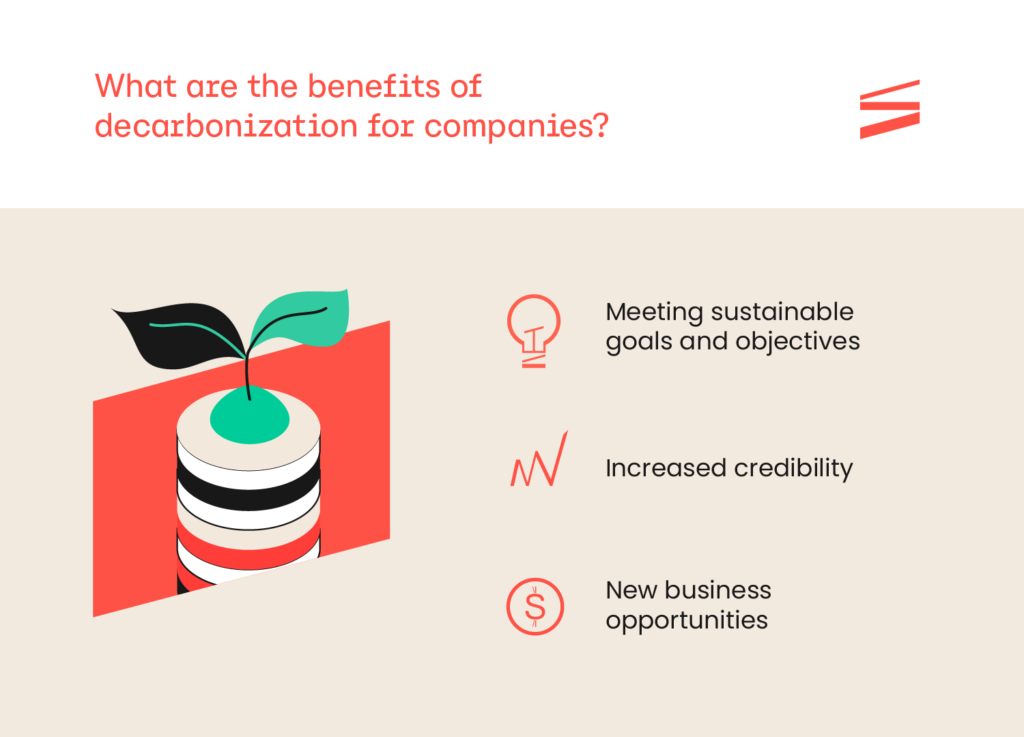Mais buscados:
Energy
Residential
Business
Renew Energy
The Paris Agreement, signed in 2015, set goals to combat the advancement of climate change. To achieve these goals, institutions, governments and companies define strategies, generally laid out in a Decarbonization Plan.
To this end, Brazil has committed to reduce its Greenhouse Gas (GHG) emissions by 43% by 2030. To fulfill this goal, the country, businesses and society must shift to a low-carbon economy.
See the importance of a decarbonization plan.
Decarbonization is the process of reducing GHG emissions, especially carbon dioxide, from the burning of fossil fuels. Decarbonization is relevant because it helps reduce the effects of climate change on the planet.
But why worry about reducing these emissions? One of the GHG Bulletins released by the World Meteorological Organization (WMO), in 2021, shows that CO2 emissions broke a new record, reaching 149% above the level recorded before industrialization.
To halt numbers like this, some countries adopted more severe measures through laws. The European Union (EU) approved a “Climate Law” in 2021 to guarantee the commitment to eliminate carbon dioxide emissions by 2050.
The Law is a milestone in tackling climate change, as it proposes that organizations focus on zeroing emissions, rather than solely focusing on compensation.

Reducing carbon emissions is a way to maintain the planet’s temperature within tolerable levels, in line with Sustainable Development Goal (SDG) 13 against global climate change. In addition, decarbonization creates the possibility of Brazil spearheading the climate agenda and developing new carbon capture and storage technologies.
The pursuit of a net-zero economy is also one of the pillars for the energy transition, which encourages the use of clean and renewable energy sources with low or zero carbon emissions. This transition could boost the creation of jobs and reduce inequalities.
Mapping emissions and creating decarbonization strategies generates more transparency for stakeholders, boosts the company’s credibility and gives visibility to new sustainable practices.
A Decarbonization Plan is a document that presents actions that will be taken to reduce GHG emissions. In addition, a Decarbonization Plan also shares the targets and deadlines for them to be achieved.
The state of Pernambuco, for example, introduced a decarbonization plan to zero GHG emissions by 2050. In the plan, the state presents projections for investments in low-carbon technologies and electric mobility. It also estimates that this low-carbon economy will add BRL 20 billion to the state’s GDP.
Another relevant decarbonization initiative was the Renaulution plan, launched in 2021, by the Renault Group. The plan includes important socio-environmental governance aspects, such as the commitment of having a neutral carbon footprint in Europe by 2050, leading the electric motorization in the continent.
First, to develop a decarbonization plan, it is important to map your company’s emission sources, through an inventory.
The Brazilian GHG Protocol Program, in which Serena has been a member since 2021, adapts the GHG Protocol international methodology and is responsible for developing a tool for calculating GHG emissions.
The public emissions registry of the GHG Protocol Program facilitates disclosure and lends transparency to GHG emissions results. Once published, inventories are classified according to seals: bronze (partial inventory – only Scope 1 and 2), silver (complete inventory – all scopes) and gold (complete and verified by Inmetro).
Serena’s Decarbonization Plan was built based on data reported in the GHG Inventory (base year 2021), which classifies emissions according to 3 distinct scopes, to wit:
In 2022, in addition to mapping emissions, Serena received a Gold Seal from the GHG Protocol.
In analyzing the three scopes of emissions, particularly Scope 1 and based on Serena’s growth projections, strategic goals were outlined to be achieved in an integrated way and that have a major socio-environmental impact. The pillars defined were mitigation, communication, emissions management and compensation.
Within each scope, specific targets were defined, such as:
See the complete Decarbonization Plan and all the targets defined.
See also:

Receive the latest news from Serena and the energy market!
